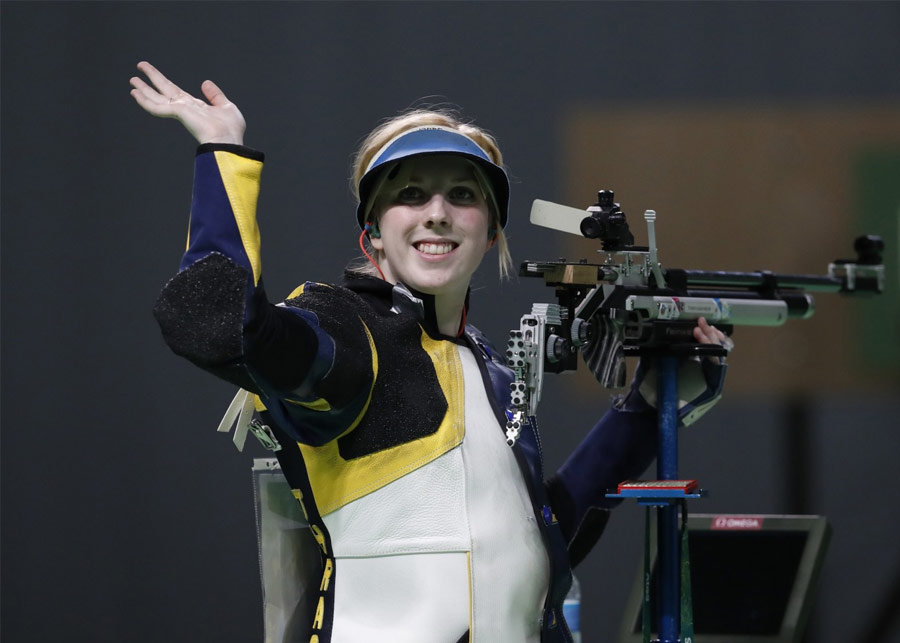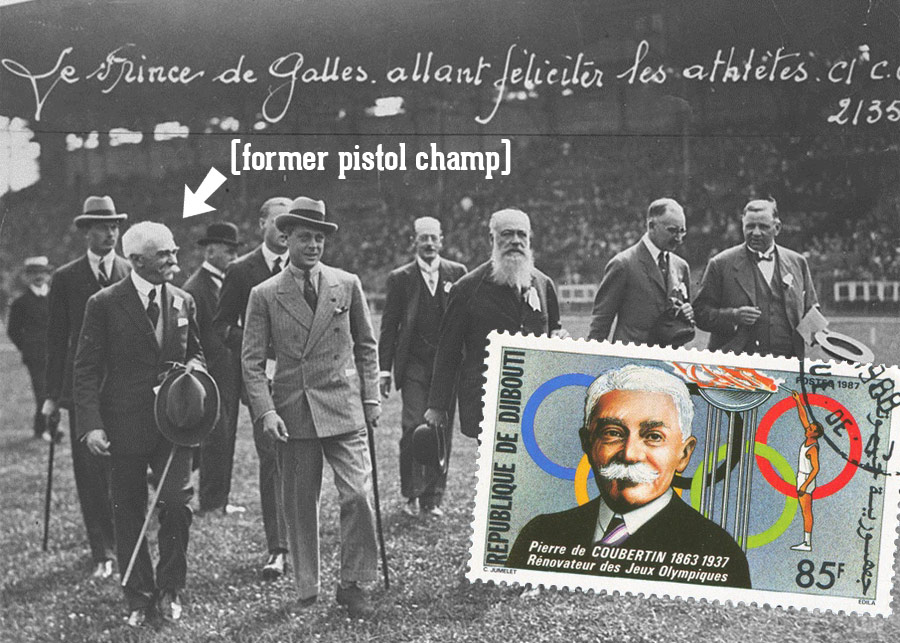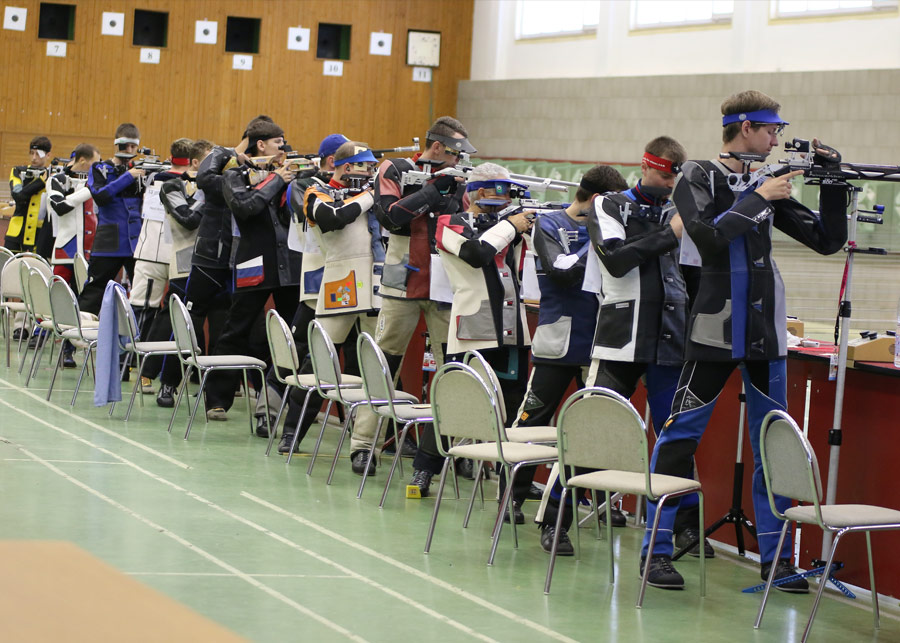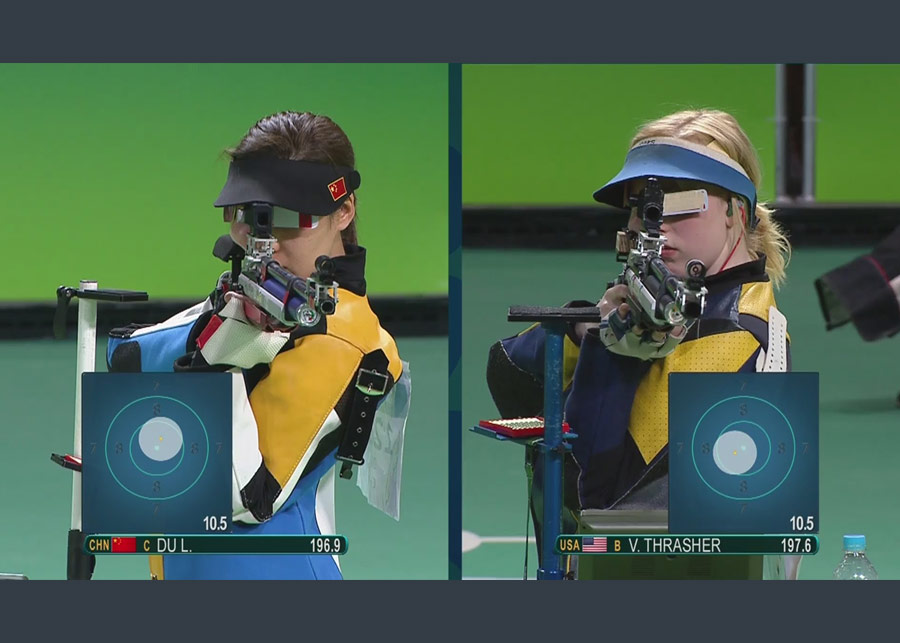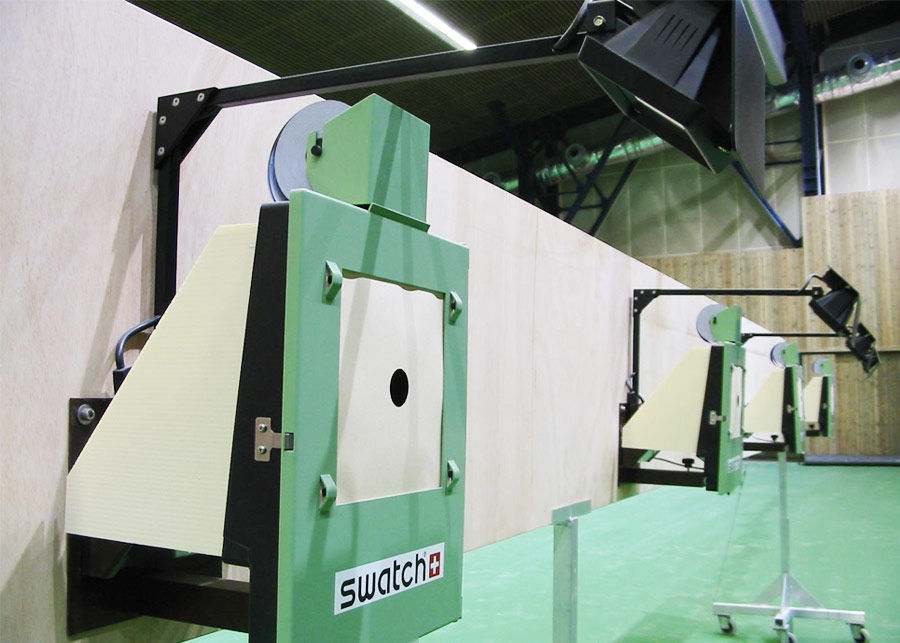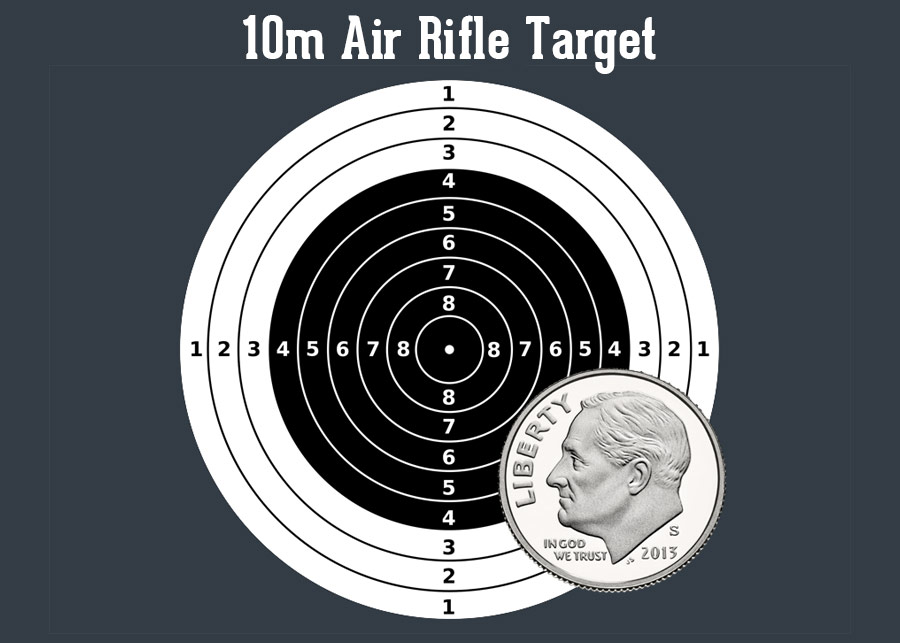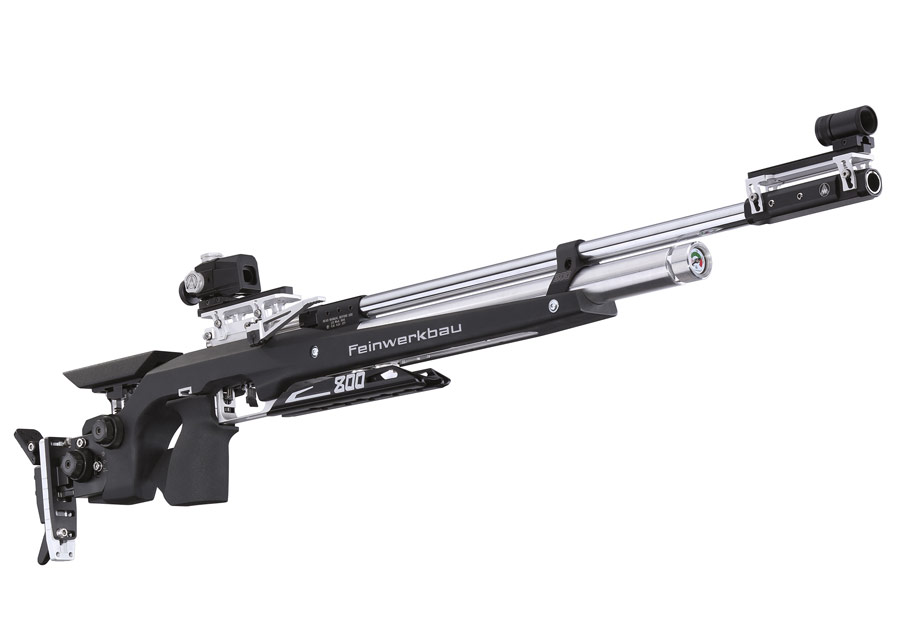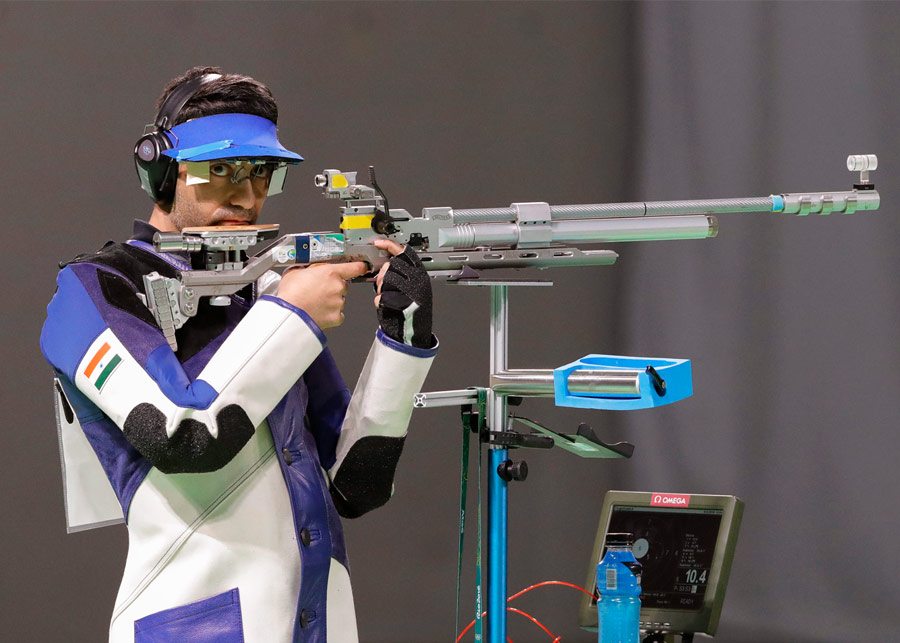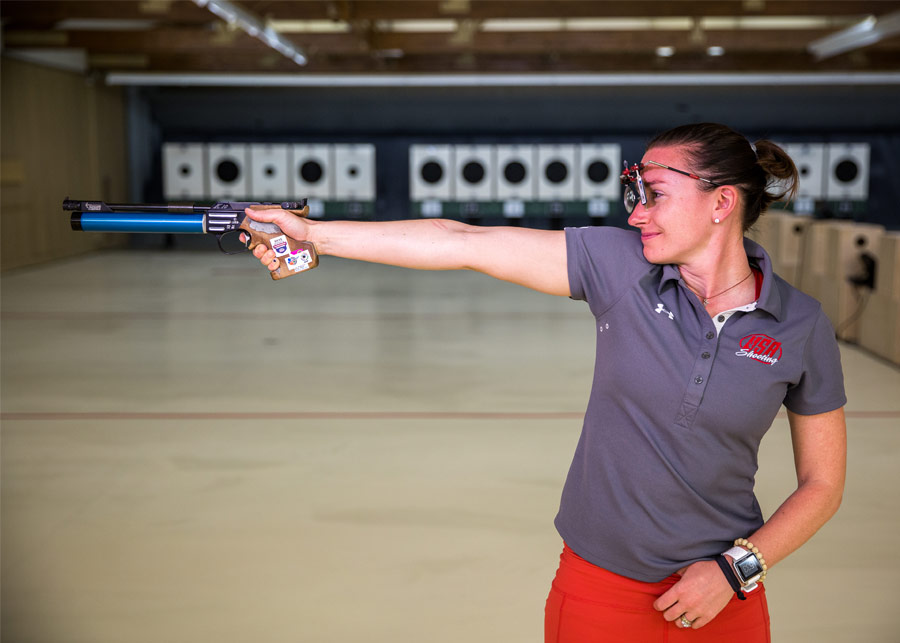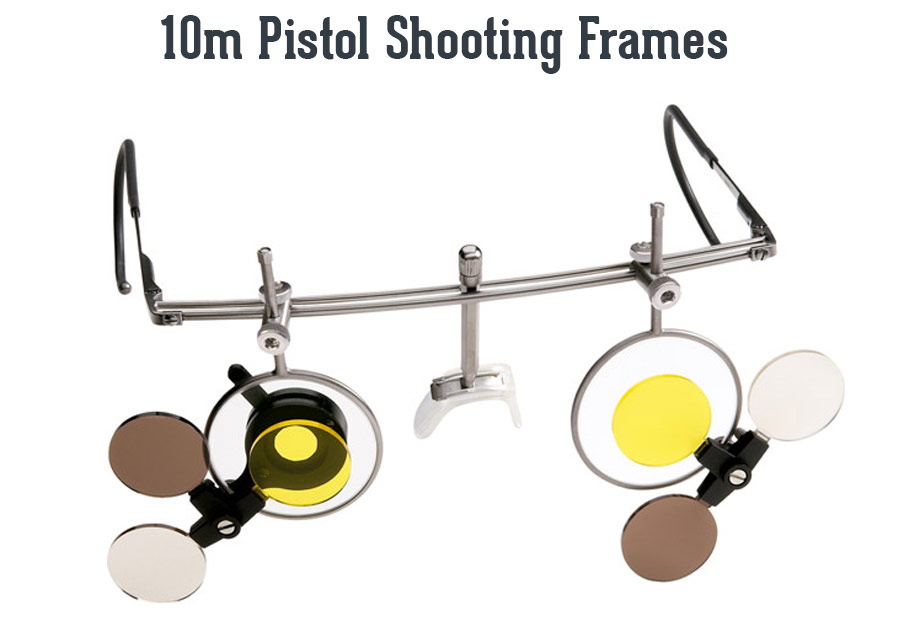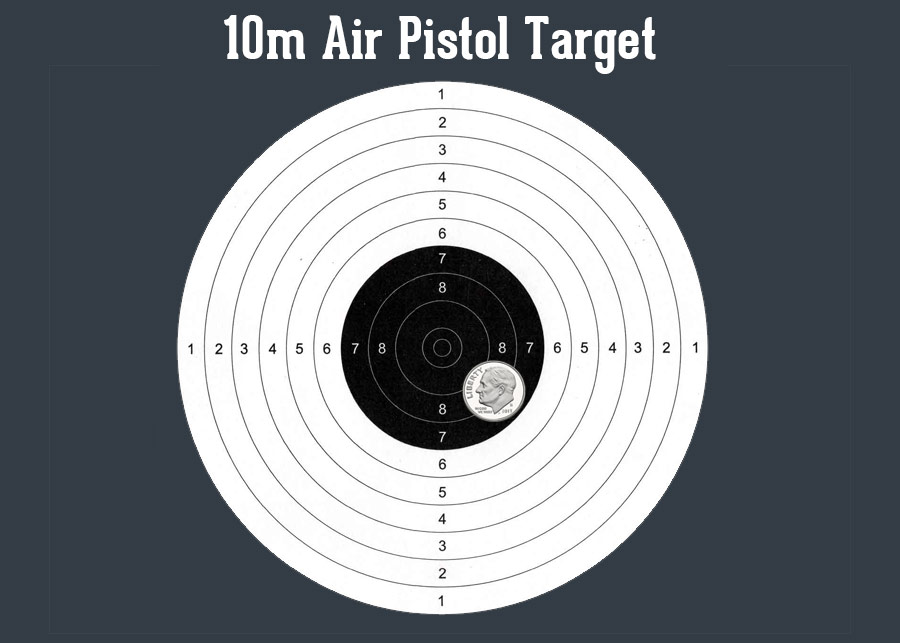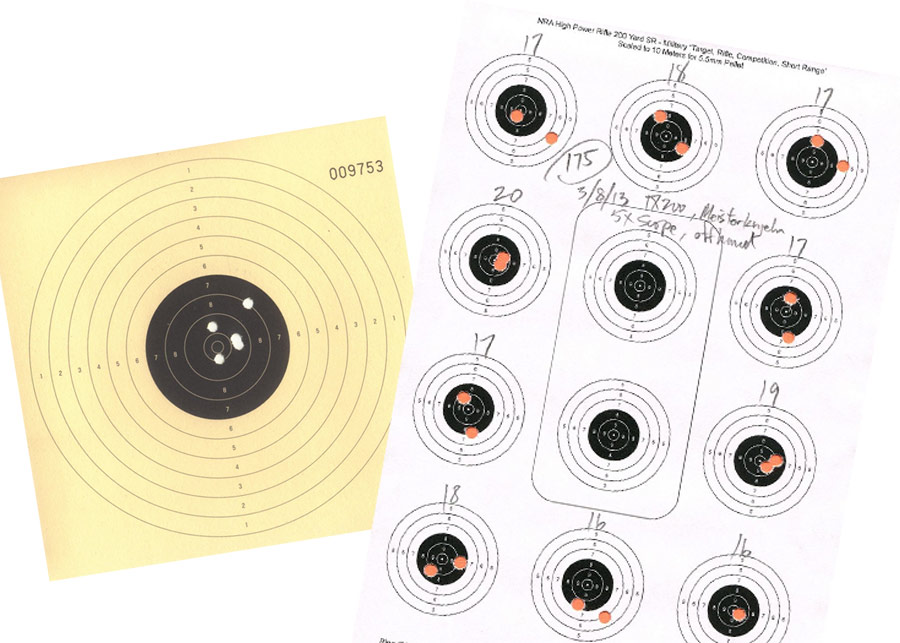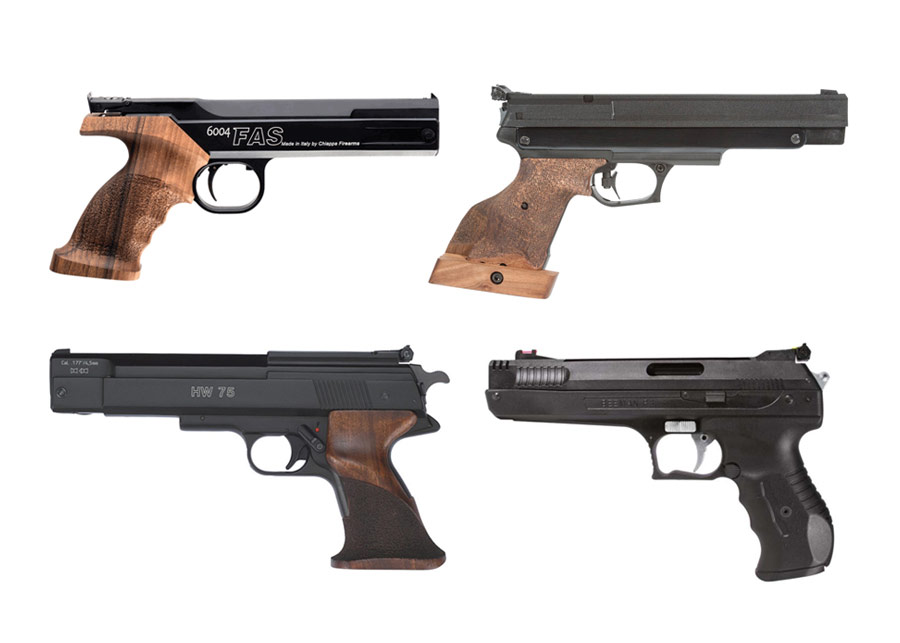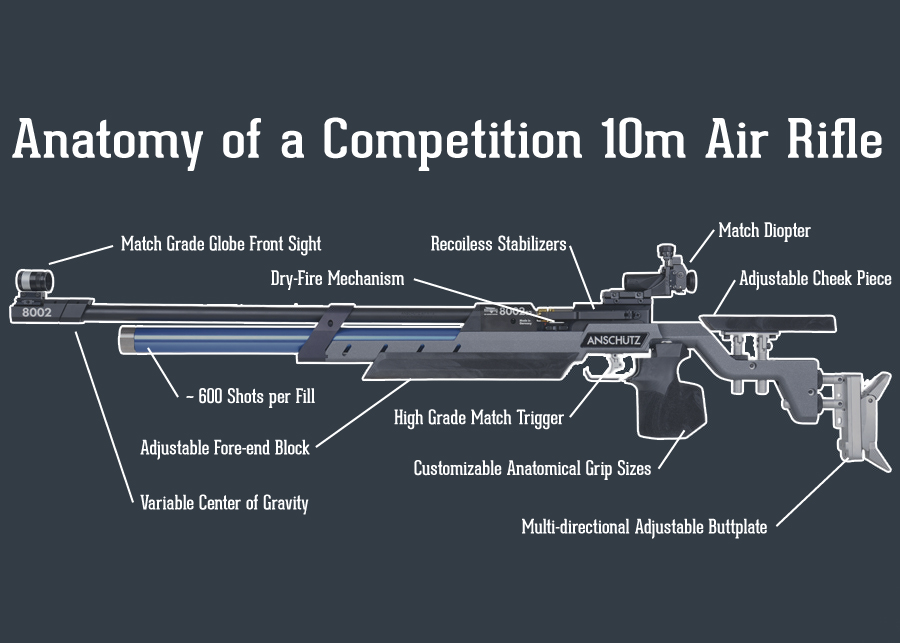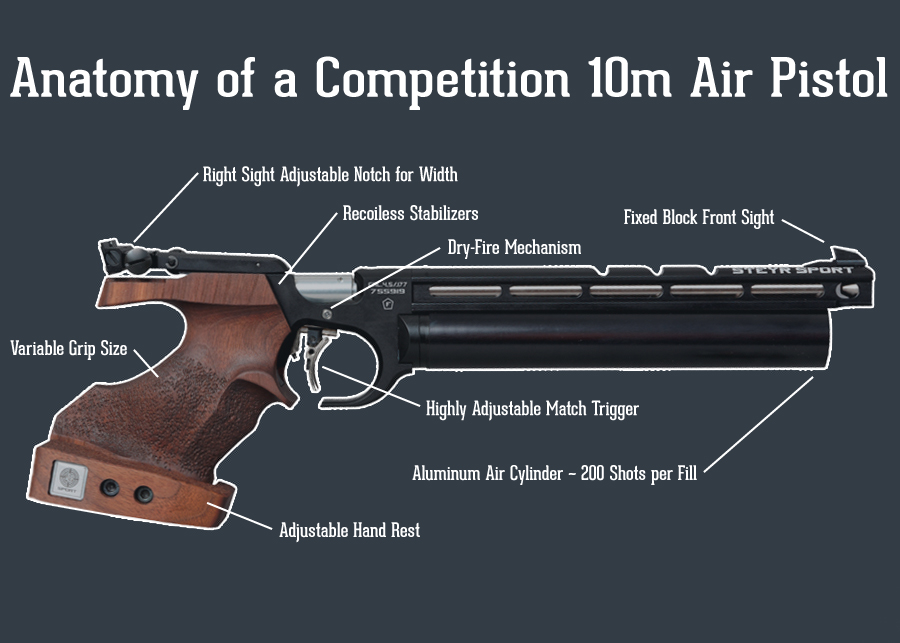Free Shipping on orders over $179
Talk to an Airgun Specialist 1-866-477-4867
Definitive Guide to 10 Meter
Innovation and airgun technology has changed dramatically over the last decade and really put airgunning on the map. Using an airgun for serious hunting and being able to shoot an airgun accurately and consistently past 100 yards is now the new reality. But none of these changes would have been possible without the sport of 10m competitive shooting. A sport that is simple in its design but yet takes a lifetime to perfect and master. And a sport that has been a driving force behind airgun innovation and technological advancements.
Detailed Review
10m History
Imagine being able to hit a period at the end of this sentence at a distance of 10m. Now that you've done it once, what about stringing together hitting that small bullseye a good 8 out of 10 shots. Now imagine the physical endurance as well as the mental fortitude to have those kinds of results over the course of 60 shots. That's the sport of competitive 10m shooting. A sport that is highlighted every four years at the Olympics as well as at yearly national championships and at the ISSF World Championships every four years. I can imagine that for many, up until the first medal of the 2016 Olympics was won by Ginny Thrasher, they may not have known that shooting an airgun was an Olympic event! Air Rifle and Air Pistol 10m events have actually been a part of the Olympics since the early 80s. And shooting events have been a part of the Olympics since their first modern inception in 1896. Possibly due to the fact that Baron Pierre de Coubertin, the father of the modern Olympic Games was a former pistol champ! The Basics of 10m Air Rifle
The only position allowed at the Olympic and World Championship level is standing. Domestically in the US there are NRA competitions that allow three positions (adding kneeling and prone). But generally when someone talks about 10m rifle they're referring to it at the highest level, being the Olympic level, so thus in our book, standing is the only position worth considering. There is a lot of science behind the proper way to stand. And the shooting suits high-level competitors wear aren't just worn for fun or tradition. They serve a purpose in helping maintain proper form throughout long matches. Speaking of long matches, the format for a 10m air rifle match is a qualification round of 60 shots fired within a time frame of 105 minutes for men. Women's matches are 40 shots in 75 minutes although many local clubs forgo the lesser shots and times for women and have them compete at the same level. This is because 10m airgun events may truly be the levelest of playing fields between the sexes. The top 8 from the qualification round advance, scores are reset to zero, and a final round of 20 shots are taken to determine the winner. To add to the excitement of this final round, after the first 6 shots are placed, every two shots taken after are followed by the lowest scoring competitor eliminated. This results in the final two shots being taken between the top two scorers. This new format really turns what could easily be described as watching paint dry to something more compelling and exciting for both competitors and viewers. This format also introduces much more pressure for participants to perform under. At the highest level of competition, precision electronic targets are used for scoring. These still integrate paper targets on a roll that rotate with each shot so that the shooter has a fresh unblemished target to shoot with each new shot. These electronic targets have precise sensors that work by triangulating the sound of the pellet tearing through the paper. This information is then displayed on a monitor (as well as allowing shots to be tracked for training). This method has proven to be accurate to within a thousandth of an inch! For the rest of us working our way to that level of competition, the tried and true method of paper targets and manually operated carrier devices are what is usually found at 10m competitive ranges. At these low-level matches often more shots per target are allowed before changing them out and range officials determine scores. Clearly there are perks to arriving at the higher levels of competition as these electronic targets are far superior although fairly expensive at this time. Hopefully a manufacturer will design a more cost efficient home model to use for training purposes. Notice the size of the target above. And keep in mind 10m is quite a distance considering the size of the bull on that target! The amount of concentration and training needed to win at the highest levels is staggering. But clearly it can be done. U.S. gold medalist Ginny Thrasher has only been shooting for 4 years before her win! Velocities of 10m air rifles are almost always under 600 fps. Though this isn't regulated, more speed doesn't help accuracy at 10m even though clearly capable with the advancement of technologies into the pre-charged pneumatic era. But keeping in mind the amount of shots in a match let alone hours practicing, lower velocities also extend shots per fill on a PCP. So even though technically you can fire at higher velocities, no one really does. Also you'll notice that only open sights are allowed (no scopes or red dot sights are allowed). Diopter sights are what you almost use exclusively. The small viewing opening allows for extreme precision and accuracy. With the long sighting line on a rifle, this removes angle errors. You'll notice on high-end competition rifles that many athletes will include rubber eye shields, optical filters and adjustable diopter aperture sizes to further create optimal aiming conditions. The Basics of 10m Air Pistol
There's a lot of similarities between 10m Air Pistol and 10m Air Rifle. You're still shooting at 10 meters, firing .177 caliber pellets. 60 shots are taken during the qualification round, but in a shorter period of time at 75 minutes for men (40 shots in 50 minutes for women). If the match is not using electronic scoring systems, an additional 15 minutes is added for men (10 minutes for women) to allow for the switching of paper targets. The pistol must be fired one handed only from a standing, unsupported position. Unlike 10m Air Rifle, there is no special clothing required though you'll notice many competitors utilizing shooting glasses. These glasses have a bevy of options including corrective lenses positioned square on the eye, colored lenses and filters to accentuate contract and blinders for the non-shooting eye (particularly important if you have a cross dominant eye, meaning your shooting eye is not your dominant eye). The other big difference is in the size of the target. Whereas the 10m Air Rifle target measures just 45.5 mm across (1.79 inches) and whose "10 ring" is just 0.5 mm in size (literally the size of a typed period), 10m Air Pistol features a larger target. The size of the Air Pistol target is 170 mm across and the center bull is 11.5 mm. So much larger than the rifle target, but that only makes sense as it is much easier to be extremely accurate with a rifle than with a pistol. It's just plain physics! There are a few restrictions on the 10m pistol as well. The minimum trigger weight is set at 17.6 oz (500 grams) and the pistol must be able to fit in a box 42cm x 20cm x 5cm. And the weight of the gun cannot exceed 3.31 lbs (though most common PCP 10m pistols are under 2 lbs). The only caliber used at all levels of 10m competition (both pistol and rifle) is .177 caliber. Targets are geared towards the size of this pellet so using a larger caliber would affect scoring and frankly this decision will never change. Wadcutter pellets are also exclusively used since they provide a clean hole for scoring when using paper. At the competition level, PCP airguns are exclusively used. No one uses spring pistons anymore except to teach fundamentals (partly due to the vibrations and double recoil that heavily affect accuracy). But if you're interested in the sport we'd recommend a solidly built single-stroke pneumatic like the FAS 6004 or even a CO2 powered target pistol like the Crosman 2300S, though be careful to change out your CO2 well before your velocities drop (we tend to recommend single strokes due to that reason) So why do we care about 10m rifle and pistol? Simple, it's possibly the single largest entry point for exposure to target shooting. A majority of boys and girls who have experience shooting have obtained it from 10m through youth groups and clubs like the 4-H, Boy Scouts of America, USA Shooting Youth Programs etc as well as being a common club sport at Colleges and Universities across the country. Peep Sight for Old Eyes Peep sights are not just a great option for precision shooting because of their accuracy. Peep sights are also great if you are dealing with things like an astigmatism or aging eyes. When dealing with either issue, your eyes lose the ability to rapidly adjust to different points of focus. In practice, when shooting a rifle, this means the target image may be sharp but the sights are blurry, or vice-versa. Or you may be able to see the target and front sight reasonably well, but the rear sight is a complete blur. A diopter or peep sight can help correct this by focusing the light through the aperture of the sight before it hits the eye and increasing the perceived depth of field that the shooter sees much in the same way that a corrective lense does. All of this really lends itself to 10m rifle. A great sport using diopter/peep sights that level the playing field for those with eye problems. Plus you can practice in your basement or backyard, and find a local 10m club to shoot at and find camaraderie. Peep and diopter sites are a great way for those who may have had to give up some of their passion for shooting due to eye issues to get back into the game. 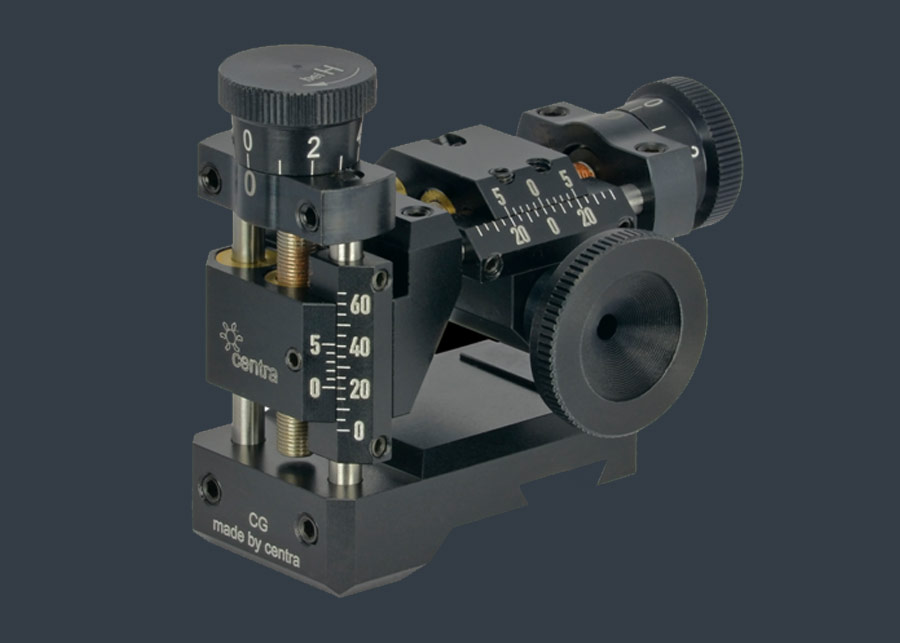

Discuss






